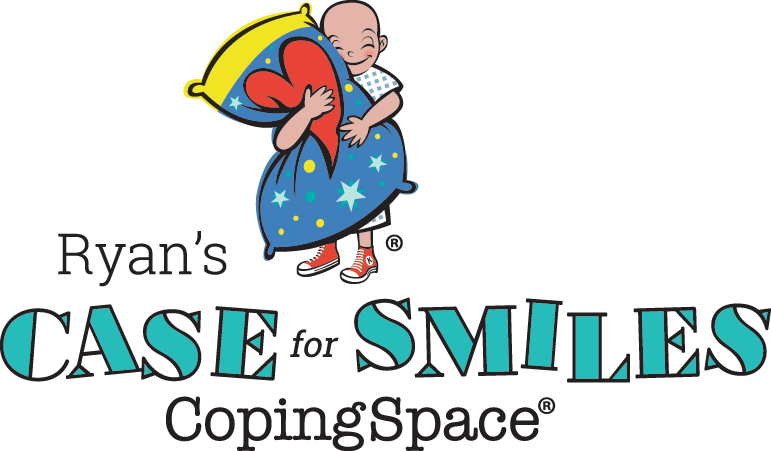BLOG
Our Favorite Resources to Help Children Cope
 A child’s illness or injury can be challenging and confusing for everyone. A wide range of emotions and reactions are “normal”. Your child may regress, display heightened anxiety, or have trouble expressing how they feel. Their emotions may seem completely overwhelming – for you both! It’s hard to know what to do and where to turn.
A child’s illness or injury can be challenging and confusing for everyone. A wide range of emotions and reactions are “normal”. Your child may regress, display heightened anxiety, or have trouble expressing how they feel. Their emotions may seem completely overwhelming – for you both! It’s hard to know what to do and where to turn.
Plus, with increased restrictions at hospitals and medical facilities, as well as over-stretched staff, getting support is harder than ever. That’s why we’ve pulled together some of our favorite resources to help your child, and the entire family, cope. (For signs your child is not coping well, visit the Children Page.)
Top Apps and Books to Help Children Cope
Below is a brief list of our top books and apps to help your child identify their feelings and manage anxiety. Of course, as always, you know your child best and should determine what fits their needs, personality and development. Should you have any concerns about their reactions, or if they are interfering with daily life, please be sure to speak to your healthcare provider.
Apps for Stress and Anxiety
Headspace – Headspace is a guided meditation subscription designed to teach mindfulness, reduce stress, and help users relax. You can use it anytime to help your child (or yourself!) build coping skills, sleep, prepare for procedures or remain calm while at the clinic. It also offers “SOS” sessions for when panic, anxiety and stress become overwhelming.
Headspace offers a free podcast in partnership with Sesame Street called Goodnight, World, as well. These stories can be listened to anytime to take your child on an adventure while learning how to calm their bodies and their minds.
Wellbeyond Meditation for Kids – Another meditation app, Wellbeyond is designed specifically to help cultivate mindfulness in kids. You can enjoy a limited number of meditations on topics such as feelings, calm, sleep and focus for free, or subscribe for unlimited access.
Breathe, Think, Do with Sesame Street – Designed for younger children, Breath, Think, Do helps users practice skills such as problem solving, self-control, planning and task persistence. Kids are given an opportunity to help a monster friend calm down and solve everyday challenges by taking deep breaths, thinking of plans, and trying them out. Use it to help your child learn emotional vocabulary and calm breathing techniques, all while having fun. It is free and available in English, as well as Spanish.
Apps to Process and Explore Feelings
 Positive Penguins – This app helps younger and school-age children explore their feelings and build resilience. Four positive penguins take kids on an interactive journey to help them understand why they feel a certain way, then behave in a productive way. There is a game mode for fun, resilience strategies and a short, guided meditation.
Positive Penguins – This app helps younger and school-age children explore their feelings and build resilience. Four positive penguins take kids on an interactive journey to help them understand why they feel a certain way, then behave in a productive way. There is a game mode for fun, resilience strategies and a short, guided meditation.
Daniel Tiger’s Grr-ific Feelings – Available on tablets, Daniel Tiger’s Grr-ific Feelings is a free app that allows young children to play while learning to identify and explore their feelings. There are 4 different activities to choose from:
- Trolley Game – Drive the trolley to discover more than a dozen mini-games about feelings.
- Sing-Along – Listen to 18 different Daniel Tiger songs, each one fully animated.
- Drawing Easel – Use paints, crayons, stickers, and more for free expression.
- Feelings Photo Booth – Take pictures that show lots of different feelings, with guidance from Daniel on how to pose.
Picture Books for Anxiety and Worry
Invisible String – Through the story of a mother who tells her children they’re all connected by an invisible string made of love, this book help kids cope with all kinds of separation anxiety, loss, and grief. It offers a very simple approach to overcoming loneliness, separation, or loss with an imaginative twist that’s easy for kids to understand.
Llama Llama Misses Mama – Part of the well-known Llama Llama series, Llama Llama Misses Mama shares the story of Llama’s first day of preschool – and his anxiety over his mother leaving. Through fun rhymes and bright pictures, it provides an opportunity to talk about separation anxiety, loneliness and worry.
The Kissing Hand – Chester Raccoon is about to go to his first day of school but doesn’t want to leave home or his mother. So, she teaches him a family secret that lets him feel her love whenever he needs it. This sweet story is helpful for younger children struggling with separation anxiety, as well those returning to school after a long absence.
Ruby Finds a Worry – Through the story of Ruby and her friend, children learn to identify the feeling of worry and how to help address it. The solution? Talk about it! This book acts as a great prompt for kids and parents to talk about emotions, anxieties, and ways to cope.
The Anxiety Survival Guide for Teens: CBT Skills to Overcome Fear, Worry, and Panic – Developed for teenagers 13 and up, this comprehensive guide offers a thorough, but not overwhelming, overview of all types of anxiety – social anxiety, separation anxiety, panic attaches, OCD, generalized anxiety and more. Through vignettes teens can relate to, the author (a CBT therapist) takes readers through the basics of cognitive behavioral therapy (CBT) and equips them with skills to take back control of their worries and their life.
My Anxious Mind: A Teen’s Guide to Managing Anxiety and Panic – Another practical guide to introduce teens to cognitive behavioral strategies, My Anxious Mind provides practical strategies to tackle anxiety, as well as tips to improve inter-personal skills, manage stress, handle panic attacks and begin meditating. This book is best for children 12 and up.
Books on Feelings
 The Color Monster – Children learn to unpack feelings and identify emotions by following along as the Color Monster and his friend explore his many feelings using color. As he learns to sort and define his mixed-up emotions, he gains self-awareness and peace – especially useful skills for children navigating uncertain and overwhelming medical experiences.
The Color Monster – Children learn to unpack feelings and identify emotions by following along as the Color Monster and his friend explore his many feelings using color. As he learns to sort and define his mixed-up emotions, he gains self-awareness and peace – especially useful skills for children navigating uncertain and overwhelming medical experiences.
The Way I Feel – Using bright and silly illustrations, The Way I Feel teaches younger children the words for emotions, as well as offers as a prompt to get them talking about their trials and triumphs throughout their day.
In My Heart – Featuring a dye-cut heart that extends throughout each spread, this book celebrates feelings of all types. It not only explores a full range of emotions but also describes how they feel physically, inside, with language that empowers your child to practice articulating and identifying their own emotions.
My Many Colored Days – Using a spectrum of vibrant colors and a menagerie of animals, Dr.Suess’ My Many Colored Days offers a way for parents to talk with children about their feelings. Throughout the story, a little boy transforms into animals of varying hues, each with corresponding emotions. This may be useful in helping your child name emotions, understand they are normal and learn how feelings can change throughout the day.
More Resources for the Whole Family
Need more support? We have more resources to help the entire family! Visit the Resource Page for more apps, books and websites, as well as meal planners, medical dictionaries and more.
